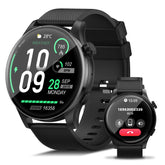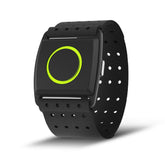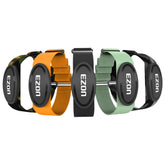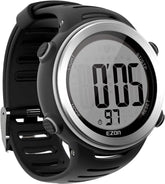Climbing Breakthroughs: Step Count and Heartbeat Data for Better Ascents
Climbing is a dance of strength, strategy, and stamina—and with data from step count watches and heartbeat monitors, you’ll turn every ascent into a lesson in precision. This guide reveals how to use movement and heart rate insights to refine climbing technique, boost endurance, and conquer routes you once thought impossible.
1. Decode Climbing Metrics: Steps and Heart Rate as Your Coach
A. Step Count Watch: More Than Just Steps
- Warm-Up Efficiency: Track 10–15 minutes of dynamic movements (jumping jacks, arm circles) as part of your pre-climb routine—aim for 500–800 steps to increase blood flow without fatigue.
- Route Planning: Use GPS to map bouldering circuits or sport climbing routes, ensuring varied terrain for balanced training (e.g., 40% vertical, 60% overhang).
B. Heartbeat Monitor: Train Within Your Intensity Sweet Spot
-
Climbing Heart Rate Zones:
- Zone 2 (60–70% Max HR): Endurance climbs (4x4-minute hangs on jugs) to build aerobic base for multi-pitch routes.
- Zone 4 (80–90% Max HR): Max-effort bouldering (1–2 tries per problem) to boost finger strength and anaerobic capacity.
- Recovery Check: Post-climb, heart rate should drop 20 BPM/min—slower recovery signals the need for longer rest between attempts.
2. Technique Refinement: Move Smarter, Not Harder
A. Footwork Precision
- Step Count Insight: Track foot placements per route (e.g., 25 steps on a V3 boulder) to identify inefficiencies—aim to reduce steps by 10% through better beta (route reading).
- Heart Rate Link: High heart rate during easy moves? Likely poor footwork—slow down and focus on balance to lower effort.
B. Grip Technique Optimization
- Hangboard Training: Use a heartbeat monitor to ensure rest intervals (60–90 seconds) allow heart rate to drop to Zone 1 before next set—critical for finger tendon recovery.
- Dynamic Moves: Monitor heart rate during dynos; if it spikes above Zone 5, practice static footwork first to build control.
3. Endurance Building: Conquer Long Routes and Repeat Efforts
A. Aerobic Endurance for Multi-Pitch Climbing
- Continuous Climbing: 30–45 minutes of easy-moderate routes (V1–V3) at Zone 2 to improve sustained grip strength—use a step count watch to log total vertical feet climbed.
- Rope Climbing Drills: 5x10-minute lead climbs with 5-minute rest, focusing on steady breathing to keep heart rate in Zone 3.
B. Anaerobic Endurance for Bouldering
- Repeater Sessions: 8–10 attempts on a V3–V4 boulder with 30-second rest—track heart rate to ensure each try starts at <80% max HR (sign of adequate recovery).
- 4x4 Protocol: 4 climbs of 4 minutes each (V2–V4), 4 minutes rest—ideal for building lactic acid tolerance, with heart rate alerts to maintain intensity.
4. Recovery: The Key to Consistent Progress
A. Overtraining Prevention
- Resting Heart Rate (RHR): A 5 BPM increase from your baseline signals fatigue—swap a hard session for yoga or finger stretches.
- Heart Rate Variability (HRV): Low HRV (below 40) means prioritize mobility work (wrist stretches, foam rolling) over campus board training.
B. Sleep for Muscle Repair
- Sleep Staging: Ensure 15–20% deep sleep for tendon and muscle repair—use your watch’s sleep insights to adjust bedtime (e.g., aim for 10 PM lights-out for 7–9 hours).
- Post-Climb Nutrition: 20g protein + 50g carbs within 60 minutes (e.g., Greek yogurt + banana) to aid recovery, guided by your watch’s calorie burn data.
5. Gear Up for Climbing Success
A. Step Count Watch Features for Climbers
- Rugged Design: 10ATM water resistance and shockproof casing for outdoor crags (e.g., EZON GPS Series).
- Altitude Tracking: Essential for alpine climbs—monitor elevation gain to acclimate properly (e.g., 500m/day max for high-altitude routes).
B. Heartbeat Monitor Must-Haves
- Wrist-Based Convenience: Lightweight design for bouldering (e.g., EZON Heart Rate Series) without interfering with grip.
- HRV Analysis: Auto-generate recovery scores to balance training and rest, critical for avoiding pulley injuries.
6. Sample 4-Week Training Plan (Bouldering Focus)
| Week | Key Workouts | Data Focus | Recovery Tip |
|---|---|---|---|
| 1 | Technique drills + easy endurance | Step count per route | Track RHR daily; rest if +5 BPM |
| 2 | Repeater sessions + core work | Heart rate recovery between tries | 1x yoga session for HRV boost |
| 3 | Max-effort bouldering + hangboard | Zone 4 intensity control | Sleep 7–9 hours for tendon repair |
| 4 | Taper + route simulation | Step count reduction (20%) | Review weekly calorie burn trends |
7. Common Climbing Mistakes to Avoid
-
Ignoring Recovery Metrics:
- Solution: Use your heartbeat monitor to schedule rest days when HRV drops—even strong climbers need 1–2 easy days/week.
-
Overlooking Warm-Up Steps:
- Solution: Log 10 minutes of dynamic warm-up as part of your step count goal (500+ steps) to reduce injury risk.
-
Training Blindly Without Data:
- Solution: Use a step count watch to track vertical feet climbed weekly, aiming for 5–10% progression.
8. FAQs: Your Climbing Data Questions Answered
Q: How do steps apply to climbing?
- Steps here refer to movement on the ground (warm-up, approach hikes, and recovery walks), which are crucial for overall activity balance.
Q: Can heart rate monitors handle dynamic movements?
- Yes! Modern wrist-based monitors (like EZON’s) use advanced sensors to track heart rate during pulls and dynos with high accuracy.
Q: What’s the ideal heart rate for redpoint attempts?
- Aim for Zone 3–4 (70–90% MHR) to balance power and control—too high (Zone 5) leads to quick fatigue, too low (Zone 2) means you’re not pushing enough.
Climb with Data, Conquer with Confidence
With step count watches and heartbeat monitors as your climbing partners, every session becomes a chance to learn, adapt, and improve. Use steps to optimize warm-ups and recovery, heart rate to master intensity, and data to refine technique and endurance.
Whether you’re sending your first V0 or projecting a V10, let technology be the edge that turns frustration into breakthroughs. Gear up, climb mindfully, and let every hold be a step toward mastery—because in climbing, progress isn’t just about reaching the top; it’s about understanding every move you make.
EZON Watch: Professional sports technology brand
https://ezonwatch.com
https://ezonwatch.com









